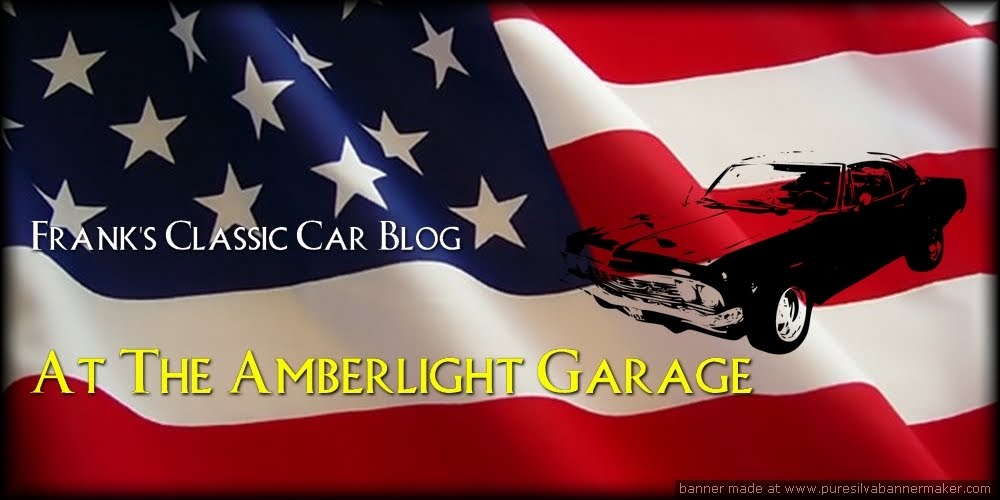I worked during what I consider was the "hay day" of the parts era. The most popular muscle cars of the sixties were just 15 years old, so the majority of the parts sold were for cars with name plates such as: Chevelle, Camaro, Corvette, Mustang, Cuda, Charger, Challenger, 442, and GTO. And who could forget the British invasion - Triumph Spitfires, MG Midgets, Austin Healeys, and Jaguars. I pushed parts for more cars then I can remember. It was at the parts store that I also bought and sold most of my cars.
Finding them was the easy part. The typical scenario would involve a customer coming in with a huge parts list for their car. After seeing what it would cost to fix their ride, and factoring in all the labor involved, the prospect of selling it seemed more appealing. I bought some sweet rides across that parts counter, like a '69 Hugger Orange Camaro, a '69 Chevelle SS, numerous '57 Chevys, and more then a few El Caminos. Yes, I was heavy into Chevys, but I wasn't very brand loyal when it came to getting a deal.
Getting back to the subject of parts, the store usually carried two "levels" of parts, good and better. We usually referred to them as cheap and expensive. The cheap parts were generic, usually imported, and budget priced. The expensive parts were name brand, heavy duty, and priced accordingly. The saying use to be, You Get What You Pay For, but that's not necessarily true today. Let me explain. On a recent trip to a "chain type" parts store, I found quite the opposite to be true. I needed upper ball joints for my '71 Cutlass. This store had them in stock and was one of the least expensive. They offered two choices. One ball joint was a generic brand, 90 day warranty, and cost $9.99 each. The other ball joint was their name brand, life time warranty, and cost $19.99 each. With such a big difference in price you would expect a major difference in the parts. That turned out to be true - sort of.
The expensive ball joint ended up being made in China, had a rough cast body, and the rubber boot was thin and held in place with wire ties. The attaching bolts didn't even have any grade marks on them. It reminded me of an import ball joint, like you would find on a Toyota. The less expensive ball joint was made in Japan, had a machined cast body, OEM style thick rubber boot and clamp, and the hardware had grade 8 markings. This was clearly the superior part, both in looks, quality, and price. It may not have had a lifetime warranty, but at this point it looked as though I was just purchasing an insurance policy with the expensive part.
.
.
Another example is the W-30 hood that I bought for my '72 Cutlass. I searched far and wide for a functional ram air hood, and discovered that no company made one on the West coast. I had no choice but to ship one in from the East coast, so that meant that I had to choose carefully. The factory W-30 Ram Air hoods were very unique. They were steel on the bottom and fiberglass on the top. I actually found an NOS GM W-30 hood on eBay but the bidding was already over two thousand dollars on the second day, a little rich for my blood. I also found a company that reproduces the OEM ram air hood using your old steel hood as a "core". The price was around $800 dollars and I should have ordered it, but I didn't. I decided to save a few dollars (I'm on a budget, remember?) and order a hood from a large and reputable fiberglass company. I shouldn't have anything to worry about, right? Wrong.
Behold the wonderful W-30 hood that I paid $500 dollars too much for...
.
.
.
.
.
.
.
.
.
.
.
.
.
.
.
.
.
.
.
.
.
I lined the edges of the scoops with tape so you can see what the problem was with the hood.
.
.
The really sad part was when I called the manager of the fiberglass company to tell him about the problem. Guess what? He said he already knew about it! "So you have been selling these without telling people about the defect?" I asked. He told me flatly he didn't consider it a defect and that all fiberglass hoods had "imperfections". I told him that if I had known about this so called imperfection before hand, I never would have bought the hood. Needless to say all of my complaining did no good, and the hood is now collecting dust in the corner of my garage. Anybody know a good fiberglass guy?
.
.
So that's the way the parts business goes. Sometimes you get what you pay for, other times you get more then you bargained for. The bottom line is that when ever possible, look before you buy. On an eBay purchase, I would say ask for more pictures or at least ask a lot of questions. I personally have bought a crap load of parts off of eBay and 99% of my purchases have been more then satisfactory. A little due diligence when buying parts will go a long way towards getting the most for your money, and saving you from storing defective parts in your garage.

















No comments:
Post a Comment
Note: Only a member of this blog may post a comment.